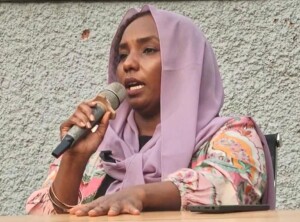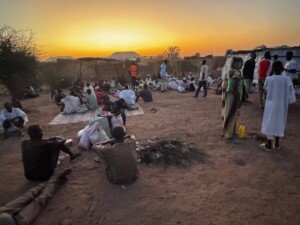Cholera: Situation in El Dindir worsens, six dead in South Darfur
The area of El Dindir in Sennar state recorded 31 deaths by cholera this week. In a collaborative report doctors found that the local health centres are too ill-equipped to effectively treat all infected people.
The area of El Dindir in Sennar state recorded 31 deaths by cholera this week. In a collaborative report doctors found that the local health centres are too ill-equipped to effectively treat all infected people.
The population in El Dindir, amounting to more than 193,000 people in 88 villages in the southeastern state, are under threat from contracting the infectious disease, according to a new report by the Central Committee of Sudanese Doctors.
There have been 45 people who died from cholera and 280 cases of infection in the hospitals and health centres in the locality. “These numbers will rise in the poor conditions of the health centres,” the report, published on Monday, reads. “The buildings are ill-equipped and lacking cadres and aides.”
An increase in the number of cases in the past days coincided with a poor drinking water supply, the doctors said, in particular with regard to the rainy season in the summer months. The area is known for high rainfall during these months.
The most recent deadly cholera victims were reported in El Tamrab village on Monday, from a total of 31 people who died from cholera.
Yesterday Osman El Jazouli, the media official of the youth of El Hawadith Street, told Radio Dabanga that a delegation of youths from El Hawadith Street and El Dindir Voluntary Organisation paid a field visit to the villages of El Dugag, Weddoda, El Dabur, Um Sakmbari, Dabarati, Um Rakhis, Nureljalil and Azaza to assess the situation.
El Jazouli appealed to the authorities to provide awareness about the epidemic, education and medicines for the patients. Also to speed-up the deployment of specialist who can educate people on how to deal with people who suffer from cholera, and how to fight the disease.
Short on material
Residents have been asked to provide in-kind and material support to contain the epidemic. Radio Dabanga reported this week that El Dindir locality is short of rehydration solutions and medical staff.
An activist in El Dindir reported to Radio Dabanga that the hospitalised cases at one of the medical isolation centres have amounted to thirteen people.
He called for the provision of awareness about hygienic environments, in light of the government's inaction. The Sudanese authorities and humanitarian relief organisations in the country refuse to make any reference to the disease being cholera.
Photos below: A small isolation ward for cholera patients in El Salam camp for displaced people in July (photos by RD source)


Darfur camps
In Darfur's Zamzam camp for displaced people three new cases of cholera were recorded. Reports from El Salam camp south of Nyala in South Darfur also reported cases of cholera and deaths: six people died last week. There were seventeen cases of infection in total, volunteers said.
The volunteer warned of increased rates of infection in El Salam camp and the surrounding villages when the rainy season peaks in South Darfur. Starting mid-June, torrential rains swept through camps, leaving the streets flooded and numbers of families homeless.
Cholera is a fast-developing, highly contagious infection that can spread in areas short of clean drinking water and with poor sanitation. In September last year Radio Dabanga received the first reports about cholera cases, in Blue Nile state. Since then, the disease spread in eastern Sudan, and later to the Northern State and central Sudan’s El Gezira. In April, sources in White Nile state reported a rapid spread of cholera. The disease then spread to North Kordofan, and fully hit Khartoum in May, the UN Office for the Coordination of Humanitarian Affairs (OCHA) in Sudan said in June.
Follow #CholeraInSudan, #الكوليرا_السودان for ongoing coverage by Radio Dabanga











 and then
and then